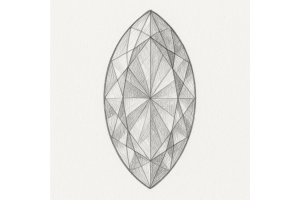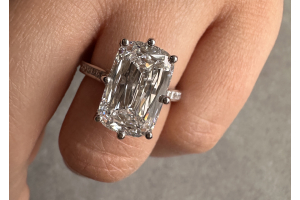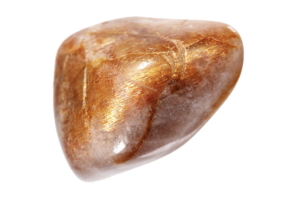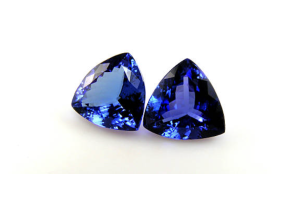GBP
/
GBP
/
Shipping to:
Currency:
How to Identify a Genuine Rhodonite: A Simple Guide to Spotting the Real Stone
Rhodonite is a captivating gemstone cherished for its distinctive pink hues and striking black veining.
Whether you're a jewellery enthusiast, a collector, or simply intrigued by this mineral, distinguishing genuine rhodonite from imitations is essential.
This guide will walk you through the key characteristics and tests to help you confidently identify authentic rhodonite.
Introduction to Rhodonite
Rhodonite is a manganese inosilicate mineral renowned for its alluring pink to rose-red colours, often accented with black manganese oxide veins.
Its name is derived from the Greek word 'rhodon', meaning 'rose', reflecting its signature colour.
Valued in jewellery and ornamental pieces, authentic rhodonite's unique appearance makes it a sought-after gemstone.
If you're interested in discovering more gemstones for your collection, check out gemstone engagement rings.
Understanding Rhodonite's Characteristics
To accurately identify rhodonite, it's important to familiarise yourself with its distinct features:
- Colour and Pattern: Genuine rhodonite typically exhibits shades ranging from soft pink to deep rose-red. The presence of black manganese oxide veins or patches creates a marbled effect, adding to its visual appeal.
- Hardness: On the Mohs scale, rhodonite has a hardness between 5.5 and 6.5, indicating moderate durability. This means it can be scratched by harder substances but is relatively resistant to everyday wear.
- Transparency: While often opaque, high-quality rhodonite can appear translucent. Transparent specimens are rare and highly prized.
- Specific Gravity: Rhodonite's specific gravity ranges from 3.57 to 3.76, making it denser than many common minerals.
Distinguishing Rhodonite from Similar Gemstones
Rhodonite is sometimes confused with other pink gemstones, notably rhodochrosite.
Here’s how to tell them apart:
- Rhodochrosite: This mineral often displays a vibrant pink to red colour with white banding. It is softer than rhodonite, with a Mohs hardness of 3.5 to 4, making it more susceptible to scratches. Additionally, rhodochrosite lacks the black veining characteristic of rhodonite. Read more about rhodochrosite vs rhodonite.
- Other Pink Stones: Be cautious of stones like thulite or pink marble, which may resemble rhodonite but differ in composition and properties.
For a broader look at gemstones and how they compare, check out lab-grown diamonds vs gemstones.
Practical Tests for Identifying Genuine Rhodonite
To verify the authenticity of rhodonite, consider the following assessments:
- Visual Inspection: Examine the stone for its signature pink colour interspersed with black veins. Uniformly coloured stones without veining may not be genuine rhodonite.
- Hardness Test: Using a steel knife (which has a Mohs hardness around 5), gently attempt to scratch an inconspicuous area of the stone. If the knife leaves a mark, the specimen may not be rhodonite, given its higher hardness.
- Streak Test: Rubbing the stone on an unglazed porcelain tile can reveal its streak colour. Authentic rhodonite typically leaves a white streak.
- Weight and Temperature: Authentic rhodonite feels denser and cooler to the touch compared to synthetic counterparts, due to its specific gravity and thermal properties.
If you're considering gemstone rings, take a look at gemstone rings.
When to Seek Professional Evaluation
If you’re uncertain about your assessments or considering a significant purchase, consulting a certified gemologist is advisable.
They can perform advanced tests, such as:
- Refractive Index Measurement: Determines how light bends as it passes through the stone, aiding in identification.
- Specific Gravity Testing: Provides precise density measurements to distinguish rhodonite from similar minerals.
- Microscopic Examination: Reveals internal features, inclusions, and potential treatments or enhancements.
For non-traditional engagement rings that incorporate unique stones, you can explore non-traditional engagement rings.
Tips for Purchasing Authentic Rhodonite
When buying rhodonite, keep these pointers in mind:
- Reputable Sellers: Purchase from established and trustworthy dealers who provide detailed information about their gemstones.
- Certification: Request authenticity certificates or reports from recognised gemological laboratories.
- Ask Questions: Inquire about the stone’s origin, treatments, and care recommendations.
- Beware of Prices Too Good to Be True: Exceptionally low prices may indicate synthetic or imitation stones.
If you're exploring jewellery options for a loved one, you might also like diamond wedding rings.
Caring for Your Rhodonite
Proper maintenance ensures your rhodonite remains beautiful and durable:
- Cleaning: Use warm, soapy water and a soft cloth. Avoid ultrasonic or steam cleaners, as they may damage the stone.
- Storage: Store separately from harder gemstones to prevent scratches. Wrapping in a soft cloth or placing in a padded jewellery box is ideal.
- Avoid Harsh Conditions: Protect rhodonite from prolonged exposure to extreme temperatures, chemicals, and direct sunlight, which can cause damage or fading.
Frequently Asked Questions
How can I tell the difference between rhodonite and rhodochrosite?
Rhodonite typically has a pink to rose-red colour with black manganese oxide veins, while rhodochrosite often exhibits a more vibrant pink with white banding and lacks the black veining. Additionally, rhodochrosite is softer, with a Mohs hardness of 3.5 to 4, compared to rhodonite’s 5.5 to 6.5. Read more about rhodochrosite vs rhodonite.
Can rhodonite change colour over time?
No, genuine rhodonite does not typically change colour. However, exposure to strong sunlight or chemicals may cause slight fading or surface damage over time.
Is dyed rhodonite considered real?
Dyed rhodonite may be made from real stone, but the treatment affects its authenticity and value. Always ask sellers if the gemstone has been enhanced.
What is the spiritual meaning of rhodonite?
Rhodonite is often associated with emotional healing, compassion, and self-love. It’s used in crystal healing to promote forgiveness and release past emotional wounds.








